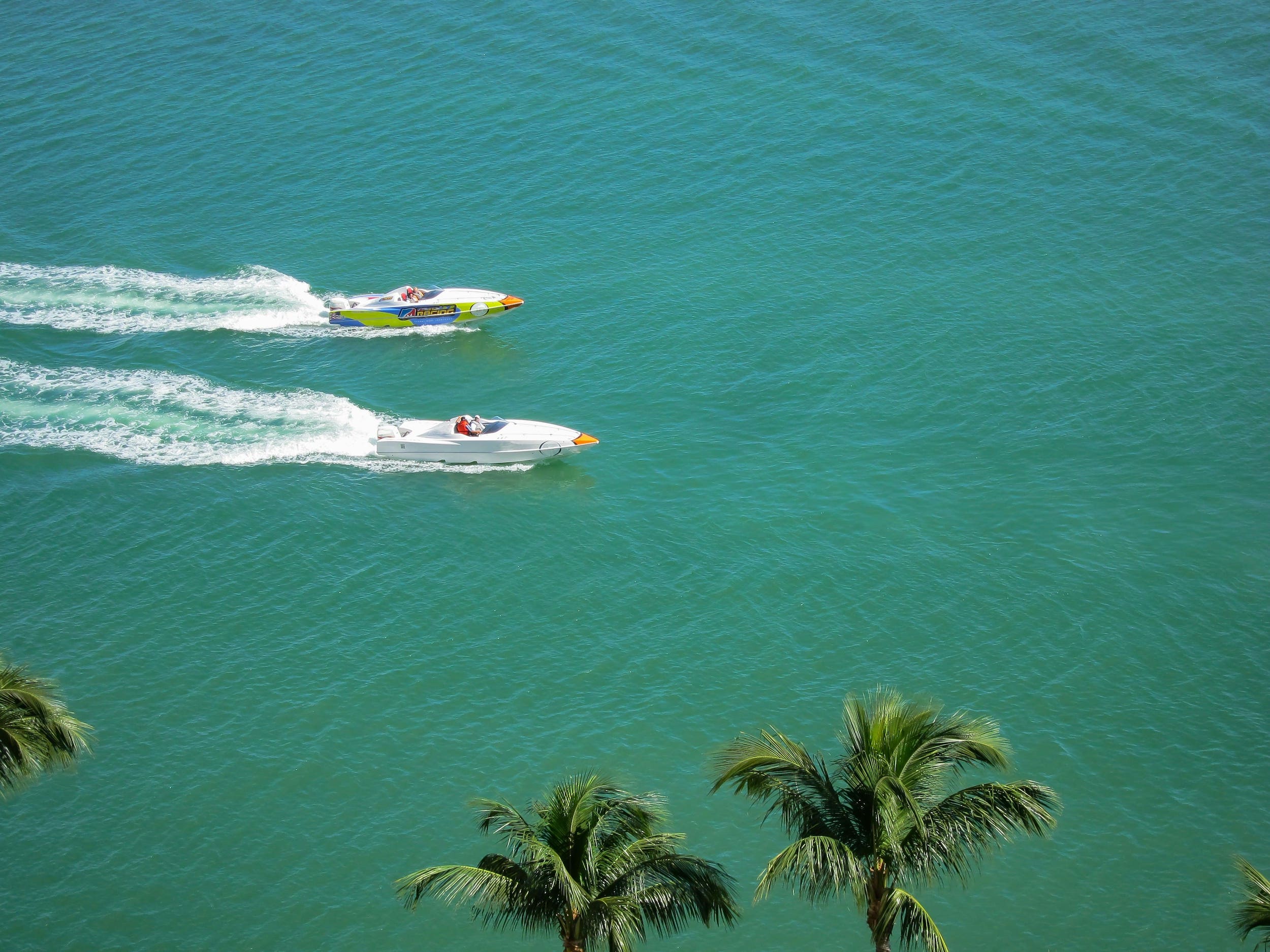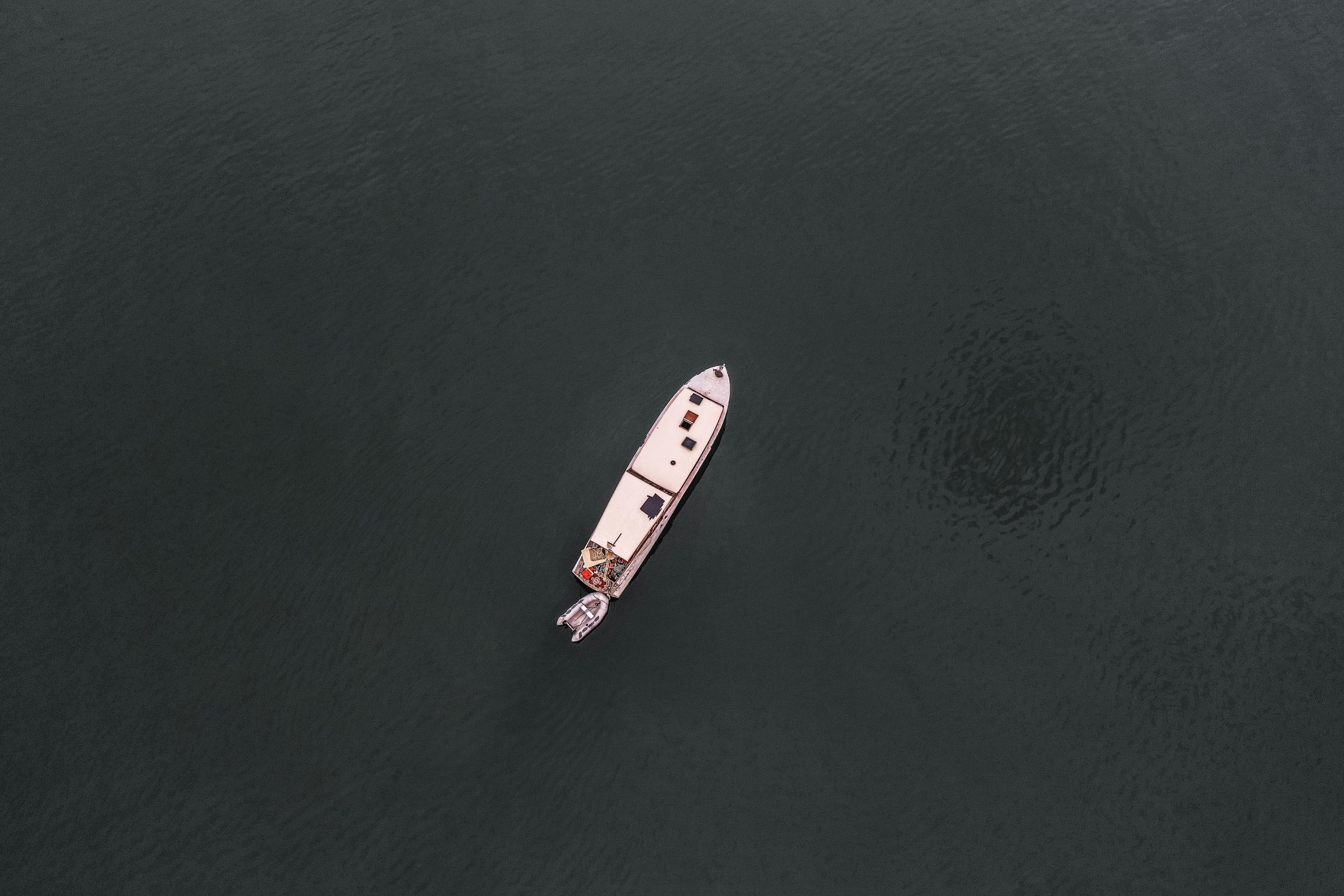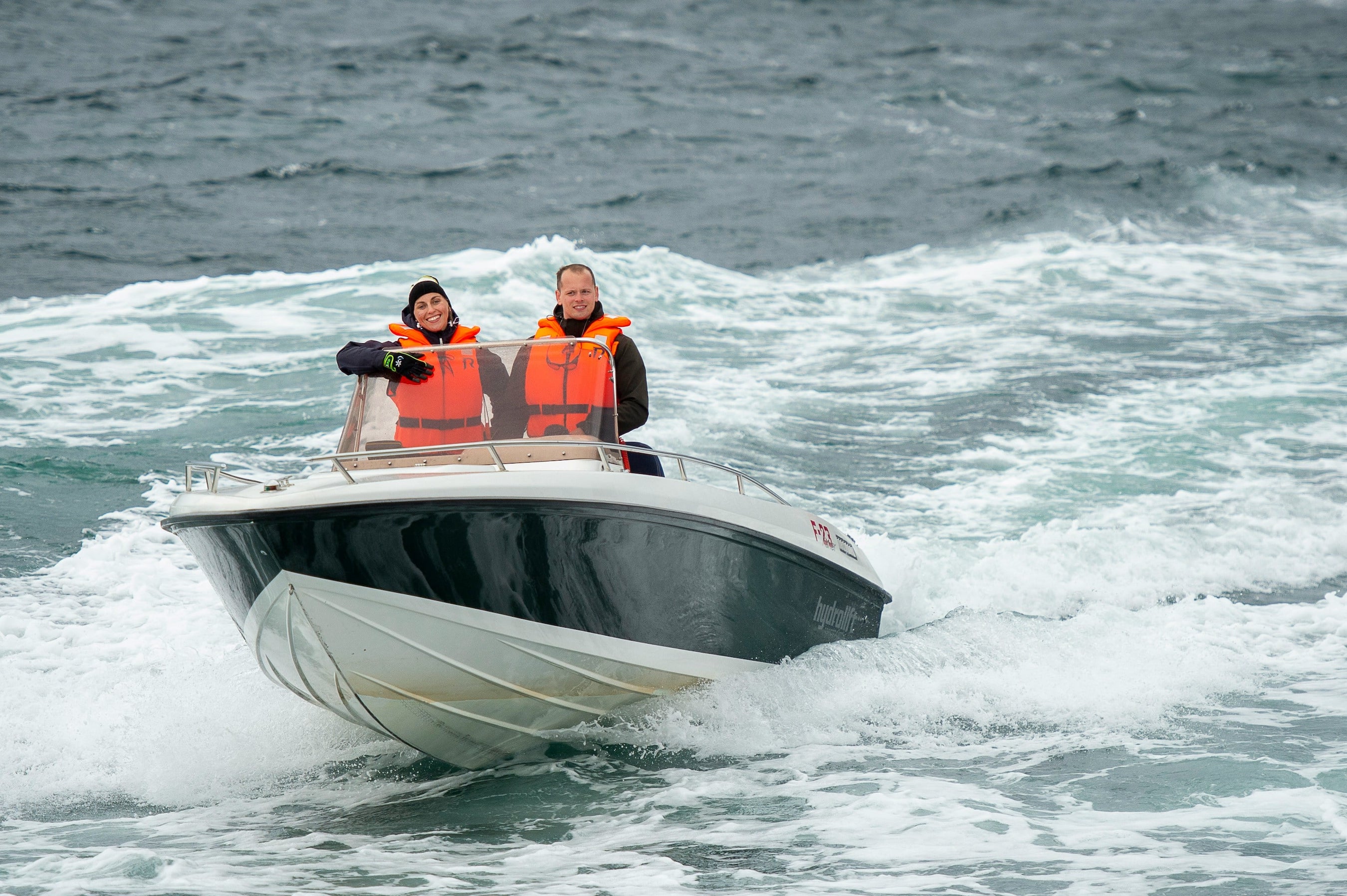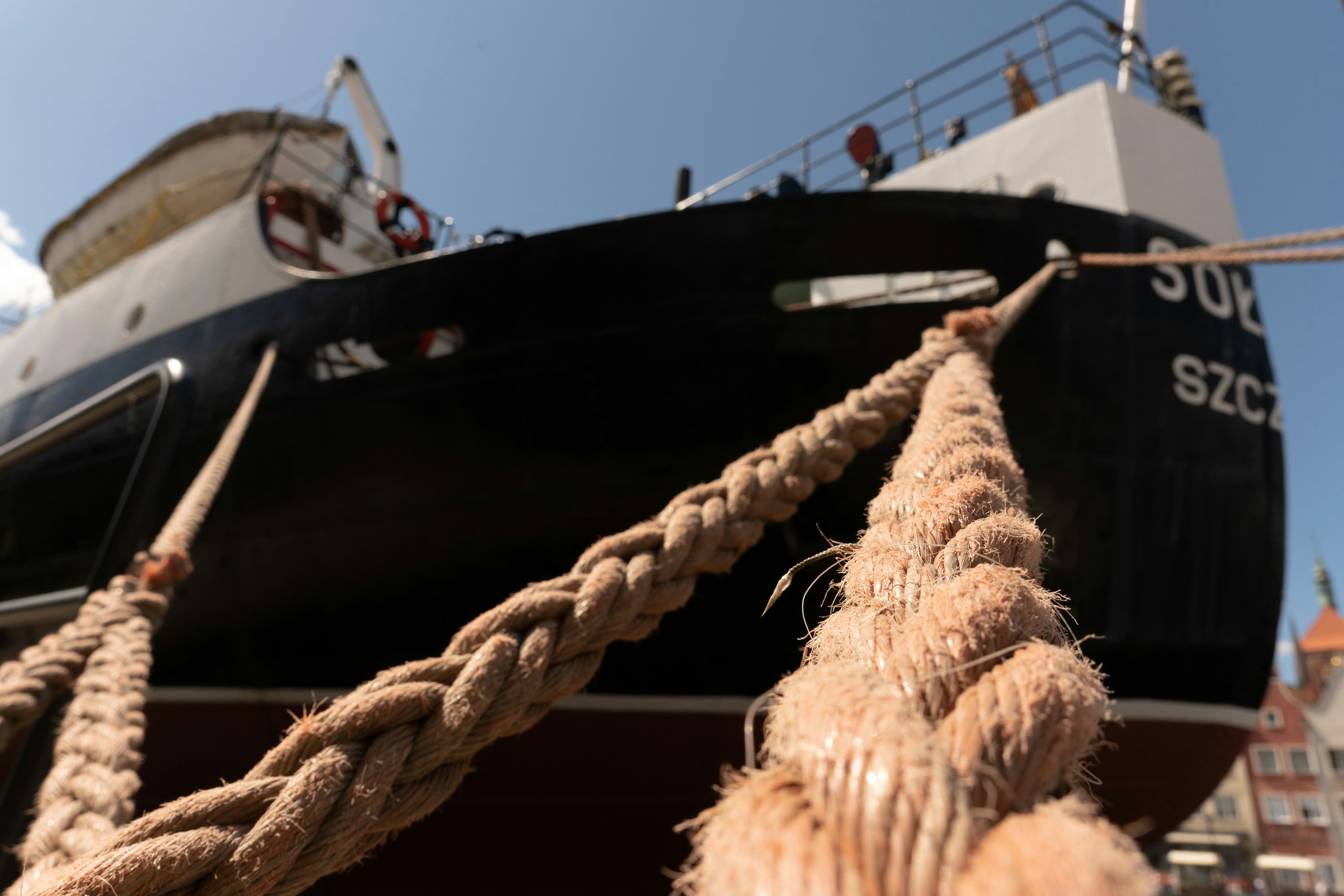The world of ultra-fast motor boats has fascinated speed and nautical engineering enthusiasts for decades. These aquatic cars are constantly pushing the limits of what seems possible on the water, reaching speeds that rival those of the most efficient race cars. When we talk about speed for a motorboat, it's not just about raw power, but about a careful balance between aerodynamics, hydrodynamics and advanced technology. These extraordinary machines, which can exceed 500 km/h in some cases, represent the culmination of decades of research and development. From legendary Spirit of Australia records to today's high-performance production models, each boat tells a unique story of innovation and technological challenge. For the owners of these jewels of technology, solutions such as the Oria Marine IoT box now make it possible to monitor and optimize performance in real time, adding a connected dimension to these extreme speed experiences.
What determines the speed of a motorboat?
Motor power
Power is the fundamental element of any fast boat. The engines of these exceptional boats often develop several thousand horsepower, ranging from overpowered outboard motors to converted helicopter turbines. This phenomenal power makes it possible to overcome water resistance, which increases exponentially with speed. The most extreme engines can reach 10,000 horsepower or more, requiring sophisticated cooling systems and special fuels.
Case design
The shape of the hull determines how the boat interacts with water. Deep V hulls offer stability and comfort but limit maximum speed, while flat hulls or hydroplanes allow you to “fly” over the water at high speed. Stepped hulls, with their calculated dropouts, create air pockets that reduce the area in contact with water. Each angle, each curve directly influences performance and the maximum achievable speed.
Weights and materials
The power-to-weight ratio is a critical factor. Ultra-lightweight materials like carbon fiber are gradually replacing aluminum and traditional fibreglass. Each kilogram saved translates into measurable speed gains. Manufacturers use techniques from aeronautics and Formula 1 to optimize structural strength while minimizing the total weight of the boat.
Navigation conditions
The state of the water has a drastic influence on performance. A perfectly smooth surface allows the full potential of the boat to be exploited, while waves or choppy conditions can halve the maximum speed. Water temperature, altitude, and even air pressure affect engine performance and hull lift.
Ranking: The 10 fastest motorboats in the world
1. Spirit of Australia — The absolute world record
Since 1978, the Spirit of Australia has held the absolute world record for speed on water with 511.13 km/h, a feat achieved by Ken Warby on Lake Blowering in Australia. This revolutionary hydroplane, weighing only 1.5 tons, was powered by a Westinghouse J34 jet engine developing 4,500 horsepower. Its unique design combined a glulam shell and composite materials that were cutting-edge for the time. This record, which has stood for over 45 years, is a perfect illustration of the daring engineering required to push the absolute limits of nautical speed.
2. Bluebird K7 — A speed legend
The Bluebird K7, piloted by Donald Campbell, reached 444.7 km/h in 1964 before its tragic accident in 1967. This jet hydroplane made history with its futuristic design and revolutionary technology. Powered by a Rolls-Royce Orpheus turbine, it represented the culmination of decades of British research into speed on water. Its recovery of the waters of Lake Coniston and its recent restoration attest to the historical importance of this exceptional machine in the evolution of nautical speed records.
3. Problem Child — The Fastest Drag Boat
Problem Child regularly sets records in the drag boat world with speeds in excess of 420 km/h over 400 meters. This specialized category combines the raw power of dragster engines with the most advanced nautical engineering. Equipped with engines developing more than 8,000 horsepower, Problem Child uses special fuels and propulsion systems optimized for lightning accelerations. These boats represent the extreme of speed over short distances, requiring exceptional pilots and highly specialized technical teams.
4. Mystic Powerboats C5000 Turbine
The Mystic C5000 Turbine reaches 402 km/h thanks to its Lycoming T55 helicopter turbines developing 5,000 horsepower each. This twin-turbine configuration, unique in the world, propels this 15-meter boat to stratospheric speeds while maintaining relative stability. Its price, estimated at over 3 million euros, reflects the complexity of its design and the rarity of its components. Turbine technology offers an exceptional power curve and greater reliability than piston engines at these extreme performance levels.
5. Cigarette Racing Team 50' Marauder AMG
The 50' Marauder AMG Cigarette, the result of collaboration with Mercedes-AMG, combines extreme performance and luxury with a maximum speed of 225 km/h. This prestigious boat integrates Formula 1 technology into its design and materials, creating a unique experience on the water. Its 1,650 horsepower Mercury Racing engines propel this sporty yacht into a symphony of power and elegance. The attention to detail, from leather seats to carbon finishes, makes this model an absolute reference in the art of high speed nautical living.
6. Outerlimits SV50
The Outerlimits SV50 reaches 210 km/h thanks to its ultra-rigid racing monohull construction and optimized engines. This technical approach favors directional stability and the predictability of behavior at high speed. Its carbon-Kevlar shell offers an exceptional strength to weight ratio, making it possible to fully exploit the available power. Embedded electronic systems, including advanced monitoring solutions such as those offered by Oria Marine, allow real-time monitoring of critical parameters during these high speed navigations.
7. Nor-Tech 450 Sport
The Nor-Tech 450 Sport represents excellence in the category of high-performance pleasure boats with its 160 km/h. Powered by carefully calibrated Mercury Racing engines, it offers an ideal compromise between pure performance and daily usability. Its design favors comfort at high speed, with a shell designed to minimize jolts and optimize stability. This philosophy makes it a preferred choice for owners looking for thrills without sacrificing the pleasure of navigation.
8. MTI 390X
The MTI 390X, a sporty catamaran reaching 180 km/h, uses the advantages of its two-hull configuration for exceptional stability. This architecture makes it possible to distribute weight and constraints optimally, allowing high speeds while maintaining excellent course stability. Its construction technology uses the most advanced composite materials, creating a structure that is both light and resistant. Dual propulsion systems offer redundancy and performance, essential characteristics for this category of boat.
9. Skater 438
The Skater 438 develops 190 km/h thanks to its perfectly balanced double engine and its professional use in offshore competition. This boat embodies the excellence of American construction with its sleek lines and its established reputation in the most prestigious races. Its reinforced chassis withstands the enormous constraints of high speed navigation in open sea, demonstrating the robustness necessary for these extreme uses. Professional teams appreciate its reliability and consistent performance under the most difficult conditions.
10. Fountain 47 Lightning
The Fountain 47 Lightning completes this ranking with its 150 km/h speed and its legendary reputation in the offshore universe. This iconic American brand has built its reputation on performance and constant technical innovation. Its technical characteristics favour versatility, allowing both relaxed outings and intensive sports sailing. The quality of construction and the attention paid to finishes make it a reference appreciated by connoisseurs looking for authenticity and performance.
Speed comparison: what do these numbers refer to?
Speed on water vs speed on land
Reaching 200 km/h on water is a much more complex challenge than on land. Hydrodynamic resistance increases exponentially with speed, in contrast to aerodynamic resistance, which follows a quadratic progression. At 100 km/h, a boat already consumes considerable power simply to overcome water resistance. This fundamental difference explains why nautical records impress engineers and mechanical enthusiasts so much, with each additional kilometer per hour requiring significant technological innovations.
Test conditions and record formalization
Official records require strict measurement and validation conditions. Organizations such as the International Motornautical Union establish precise protocols including the length of the course, acceptable weather conditions and approved timing systems. These constraints guarantee the comparability and reliability of the announced performances, avoiding approximations that could distort rankings and comparisons between different boats.
What are the uses for these ultra-fast boats?
Offshore racing
Offshore competitions represent the most obvious use of these war machines. These races, organized on courses at sea, test both the resistance of the crews and the boats. Average speeds often exceed 150 km/h over several hours, requiring exceptional physical and technical preparation. These events serve as test laboratories for technological innovations that would later be found on production models.
High-end leisure
The nautical luxury market is gradually adopting these extreme technologies to offer exclusive experiences. Wealthy owners are looking for the unique sensations and social recognition that these technological jewels bring. This clientele often favors models combining performance and refinement, creating a specific market segment where technical excellence meets the French art of living.
Brand communication
Manufacturers use these exceptional achievements as technological showcases to promote their know-how. These extreme models demonstrate engineering and innovation capabilities, creating a halo effect that enhances the entire range. This technical communication strategy makes it possible to position the brand in premium segments and to justify the prices charged on more accessible models.
Safety and regulations
Permit required
Driving these boats requires specialized permits adapted to their power and speed. In France, a coastal license is sufficient for most models, but some powers require additional qualifications. Theoretical and practical training is becoming crucial to master these demanding machines, requiring a thorough understanding of hydrodynamic phenomena and high speed piloting techniques.
Authorized sailing areas
The regulations limit the use of these extreme speeds to certain specifically dedicated areas. Closed bodies of water, approved training areas and certain maritime sectors allow these practices under strict conditions. This limitation protects both other users and the marine environment, while allowing enthusiasts to take full advantage of the performance of their boats.
Risks associated with high speed
The risks inherent in these speeds require particular precautions and reinforced safety equipment. Embedded surveillance systems, such as those developed by Oria Marine, make it possible to continuously monitor critical parameters and to alert in the event of an anomaly. This preventive approach, combined with appropriate training and personal protective equipment, minimizes the dangers associated with these exceptional navigations.
FAQ: All you need to know about fast motor boats
What is the fastest motorboat in the world?
The Spirit of Australia holds the absolute record with 511.13 km/h set in 1978. This exceptional record has never been beaten despite considerable technological progress in recent decades.
Can you buy a boat like the Spirit of Australia?
These record boats remain unique prototypes, but several manufacturers offer models inspired by these technologies reaching 200 to 300 km/h. Prices generally start around 500,000 euros for the most accessible versions.
What license do you need to pilot an ultra-fast boat?
The French coastal license allows the driving of most of these boats, but additional training is strongly recommended. Some very powerful models may require specific qualifications according to local regulations.
How much does a very fast motor boat cost?
Prices range from 200,000 euros for a used high-performance model to several million euros for the most exclusive tailor-made creations. Maintenance and fuel costs are also significant budgetary items.
What fuels are used to reach these speeds?
Aviation gasoline, methanol and sometimes special racing fuels optimize performance. These expensive fuels require specific supply and storage systems, adapted to their particular characteristics.
Can we sail at sea with these boats?
Most of these boats are designed for maritime navigation, but their maximum performance can only be operated under ideal conditions. The state of the sea has a drastic influence on achievable speeds and navigation safety.
Are there any official competitions for these models?
Numerous international competitions, from offshore championships to pure speed records, make it possible to compare these exceptional performances. These events bring together the best pilots and the most advanced technologies in global boating.
Conclusion
These ten exceptional boats perfectly illustrate the constant evolution of nautical technologies and the perpetual quest for speed on the water. From the legendary Spirit of Australia to contemporary models combining performance and refinement, each generation brings its innovations and pushes the limits of what is possible. Current trends favour the integration of sophisticated electronic systems, the use of ever more efficient materials and the development of alternative engines. This passion for nautical speed continues to inspire engineers and builders, promising new records and even more extraordinary experiences. To discover more exceptional models or to benefit from expert advice to acquire your future speedboat, do not hesitate to consult the specialists who will be able to guide you to the boat of your dreams and the support technologies most suited to your nautical projects.









